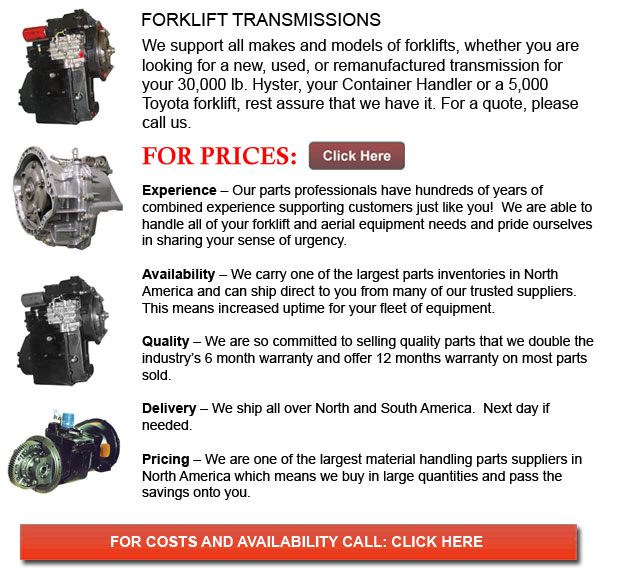
Transmissions for Forklift - Using gear ratios, a transmission or gearbox provides torque and speed conversions from a rotating power source to a different device. The term transmission refers to the whole drive train, along with the prop shaft, clutch, final drive shafts, differential and gearbox. Transmissions are most frequently used in motor vehicles. The transmission alters the output of the internal combustion engine so as to drive the wheels. These engines should function at a high rate of rotational speed, something that is not suitable for starting, slower travel or stopping. The transmission raises torque in the process of decreasing the higher engine speed to the slower wheel speed. Transmissions are also utilized on fixed machines, pedal bikes and anywhere rotational torque and rotational speed need change.
There are single ratio transmissions which perform by changing the torque and speed of motor output. There are lots of multiple gear transmissions with the ability to shift between ratios as their speed changes. This gear switching could be accomplished by hand or automatically. Forward and reverse, or directional control, can be supplied as well.
The transmission in motor vehicles would generally connect to the engines crankshaft. The output travels via the driveshaft to one or more differentials in effect driving the wheels. A differential's main function is to adjust the rotational direction, even though, it can also provide gear reduction too.
Power transmission torque converters and other hybrid configurations are other alternative instruments for torque and speed change. Traditional gear/belt transmissions are not the only machine offered.
The simplest of transmissions are simply called gearboxes and they supply gear reductions in conjunction with right angle change in the direction of the shaft. At times these simple gearboxes are used on PTO equipment or powered agricultural machines. The axial PTO shaft is at odds with the normal need for the powered shaft. This particular shaft is either vertical, or horizontally extending from one side of the implement to another, which depends on the piece of machinery. Snow blowers and silage choppers are examples of much more complicated machines that have drives supplying output in many directions.
In a wind turbine, the kind of gearbox utilized is much more complex and bigger as opposed to the PTO gearbox utilized in agricultural machinery. The wind turbine gearbos changes the high slow turbine rotation into the faster electrical generator rotations. Weighing up to quite a lot of tons, and depending upon the size of the turbine, these gearboxes generally contain 3 stages to accomplish a complete gear ratio from 40:1 to over 100:1. To be able to remain compact and to be able to distribute the massive amount of torque of the turbine over more teeth of the low-speed shaft, the initial stage of the gearbox is usually a planetary gear. Endurance of these gearboxes has been an issue for some time.
![]() Click to Download the pdf
Click to Download the pdf
Forklift Parts
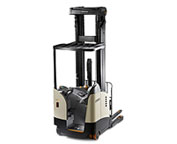

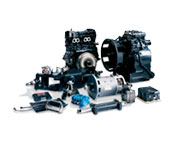
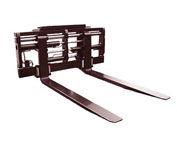
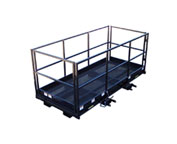

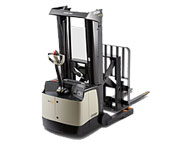
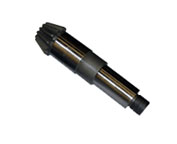
Lift Parts Express
TOLL FREE: 1-888-695-7994
Irving, Texas
forkliftpartsirving.com
Email Us
About Us


